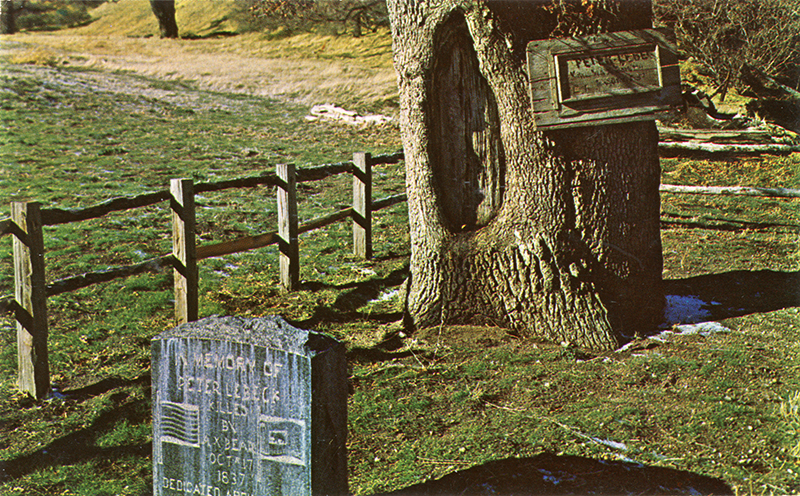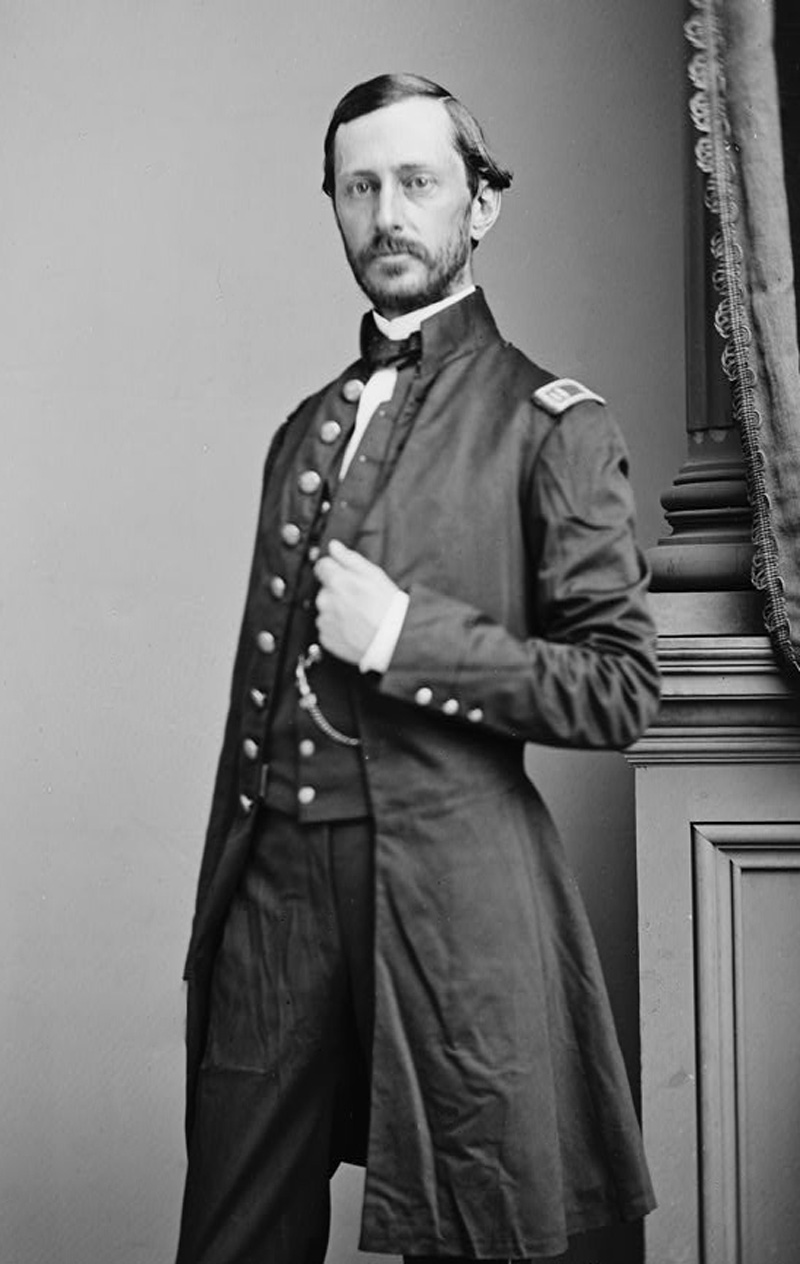|
|


Click image to enlarge
The Peter Lebeck oak at Fort Tejon. Probably 1960s. Unused color picture postcard published by Columbia Wholesale Supply, 11401 Chandler, North Hollywood, Calif. 58826. The Zip code was a new addition; it appears in a different typeface. Interstate 5 does not yet exist (see reference to Highwa 99 below). Back of postcard reads:
Fort Tejon Historical Marker — at athe top of "the Grapevine" Ridge Route on Highway 99 between Los Angeles and Bakerfield.
Color Photo by Louis & Virginia Kay Little is known of Peter le Beck (alternately Lebeck or LaBeck or Lebec) except that he was probably a trapper from France who was killed Oct. 17, 1837, by a bear, presumably a grizzly, and buried under an oak tree on the grounds of what would later become Fort Tejon (next to the former hospital and commissary).
Lt. R.S. Williamson camped at the same oak grove in 1853 while on his mid-1850s mapping mission for a practicable railway route from the Mississippi River to the Pacific Ocean. Geologist William P. Blake accompanied Williamson's party and writes (1857): The surface of the valley is covered with a luxuriant growth of grass, and a deep soil supports groves of magnificent oak trees, some of them eight feet in diameter. ... One of the large oaks bears the following inscription, cut deeply into the hard wood: "Peter le Beck, killed by a bear, Oct. 17, 1837." A broad, flat surface was hewed upon the trunk, and well smoothed off before the letters were cut. It is a durable monument. The area was garrisoned by the United States Army a year later, on Aug. 10, 1854, as Fort Tejon, the first military fort in the interior of California. The inscription in the oak tree proved not to be as "durable" as Blake predicted. Ann Zwinger, in John Xántus: The Fort Tejon Letters, 1857-1859, (University of Arizona Press, 1986) writes: In twenty years, by the time Xántus was there [May 1, 1857 - Jan. 14, 1859], the tree had covered with bark the bare spot which held the inscription. A group called the Foxtail Rangers from Bakersfield removed the bark in the 1880-90s and found the inscription in reverse on its underside. ... They also exhumed Lebec's body and returned it to its grave. The bark is now (2001) encased in the U.S. Forestry ranger station at Fort Tejon, where a marker relates that the reverse lettering was found when "a lady of the Foxtail Rangers" removed it from the tree in 1889. A proper headstone was placed beneath the Lebec Oak on April 5, 1938 — a century and change after Le Beck's death — as a more "durable" epitaph for the body buried there. Preceded by the words "In Memory Of," it replicates the precise inscription that had been carved into the tree, as follows: "PETER LEBECK / KILLED BY A X BEAR / OCTR 17 / 1837." While it's conceivable that "X" could mark the spot, it more likely denotes the type of bear. "X" was common shorthand for a grizzly. "Bec," incidentally, is French for "nozzle."
LW3058: 9600 dpi jpeg from original postcard purchased 2017 by Leon Worden.
|
Inventory of State Park Collection
Self-Guided Tour 1996
Huell Howser Program 1999
Hotel Plan 1858
Ruins (Mult.)
Rancho La Liebre 1929 (Story)
Postcard 1930s
Flying A Gasoline 1938
Home Movie 1939
Book: Old Adobes (Cullimore 1949)
Travelogue 1949
Old Gate Pre-1950
Officers' Quarters ~1950s
Headquarters Bldg. 1957 (Story)
Brochure Pre-1967
Enlisted Men's Barracks (Mult.)
• 1857 Earthquake (1)
Peter Lebeck Exhumed 1890
Lebeck Story 1901
Lebeck Grave 1957 (Story)
Lebeck Oak ~1960s
Lebeck Oak & Grave Marker x7
Lebeck Bark x2
Lebeck Sculpture x3
|
The site owner makes no assertions as to ownership of any original copyrights to digitized images. However, these images are intended for Personal or Research use only. Any other kind of use, including but not limited to commercial or scholarly publication in any medium or format, public exhibition, or use online or in a web site, may be subject to additional restrictions including but not limited to the copyrights held by parties other than the site owner. USERS ARE SOLELY RESPONSIBLE for determining the existence of such rights and for obtaining any permissions and/or paying associated fees necessary for the proposed use.






















